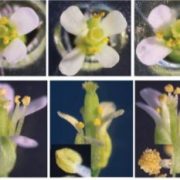
It’s a TRAPP! Arabidopsis Transport Protein Particle (TRAPP) Complexes Contain a Novel Plant-Specific Subunit
Research, The Plant Cell, The Plant Cell: In BriefMembrane vesicle trafficking is the process of moving and distributing signaling molecules from their place of synthesis or capture to target locations inside or outside the cell. Vesicles, mobile membrane compartments produced from the endoplasmic reticulum, carry proteins and other molecules to an…

Endosidin20: A Key to Unlock the Secrets of Cellulose Biosynthesis
Research, The Plant Cell, The Plant Cell: In BriefBy now, you would think we’d know everything about cellulose, given its status as the most abundant biopolymer on Earth and its simple chemical composition. Cellulose is composed of β-1,4-D-glucose units assembled into straight chain polymers. These rod-like molecules are packed into strong microfibrils…
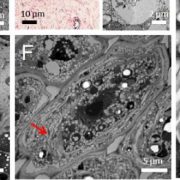
Breaking the Mold: Reduced Protein Storage in Brassica napus Seed Triggers Unexpected Structural Changes
Research, The Plant Cell, The Plant Cell: In BriefDuring development, seeds pack away large amounts of storage nutrients in the form of starch, proteins, and lipids (typically triacylglycerides), but the ratios of these storage products vary tremendously between seed types. Because of the obvious agricultural implications, researchers have long sought…

Sugar Is Sweeter: Plants Open Their “Mouths” for Glucose, Not Malate, In the Morning
Research, The Plant Cell, The Plant Cell: In BriefRegulation of stomatal opening and closing in plants in response to environmental cues continues to be well studied (García-León et al., 2019; Li et al., 2020), as it is important for balancing the intake of carbon dioxide for photosynthesis (PS) with the release of water during transpiration. But…
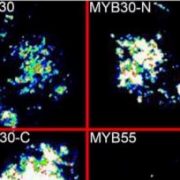
MYB30 Regulates Photomorphogenesis via Interactions with Active Phytochromes and PIFs
Research, The Plant Cell, The Plant Cell: In BriefMYB proteins are a group of transcription factors that are highly conserved in all vertebrates and were first implicated in avian myeloblastosis (leukemia). Subsequently, they were shown to be cellular proto-oncogenes that regulate production of blood cells in animals. MYB proteins contain a DNA-binding…
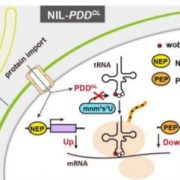
The Butterfly Effect: Natural Variation of a Chloroplast tRNA-Modifying Enzyme Leads to Pleiotropic Developmental Defects in Rice
Research, The Plant Cell, The Plant Cell: In BriefTranslation of RNA information into protein is a fundamental process ensuring the production of functional proteins in cells. Transfer RNA (tRNA) is a vital component of the translation machinery as it delivers the correct amino acids to the elongating peptide chain based on codon-anticodon recognition.…
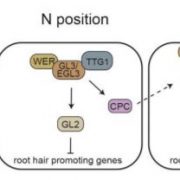
Twist of Fate: Ribosomal Stress Reprograms Root Hair Pattering
Research, The Plant Cell, The Plant Cell: In BriefThe root epidermis presents an elegant model to study cell differentiation. Based on positional cues, Arabidopsis distinguishes two epidermal cell types. Cells in the H position, adjacent to the junction of two cortex cells, have the capacity of developing root hair identity, whereas the non-hair cells…
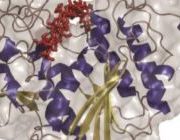
Shaping the Plant Cell Wall: Molecular Characteristics of XOAT1 in Polysaccharide Acetylation
Research, The Plant Cell, The Plant Cell: In BriefPlant cell walls provide mechanical support to plant cells, determine their size and shape, and influence plant development and stress responses. The plant cell wall is composed mainly of polysaccharides, including cellulose, hemicellulose and pectins, with smaller amounts of phenolic polymers and proteins…
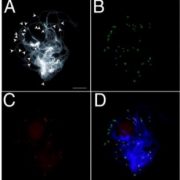
Glyphosate Resistance Decoded: the reference sequence of the extrachromosomal DNA Replicon in Amaranth
Research, The Plant Cell, The Plant Cell: In BriefDecades of research in evolutionary genetics has shown that genomic plasticity, in particular variation in gene copy number, is a favored mechanism to provide rapid adaptation to adverse environmental conditions through increase in gene dosage. Gene amplification has been observed across kingdoms and…

